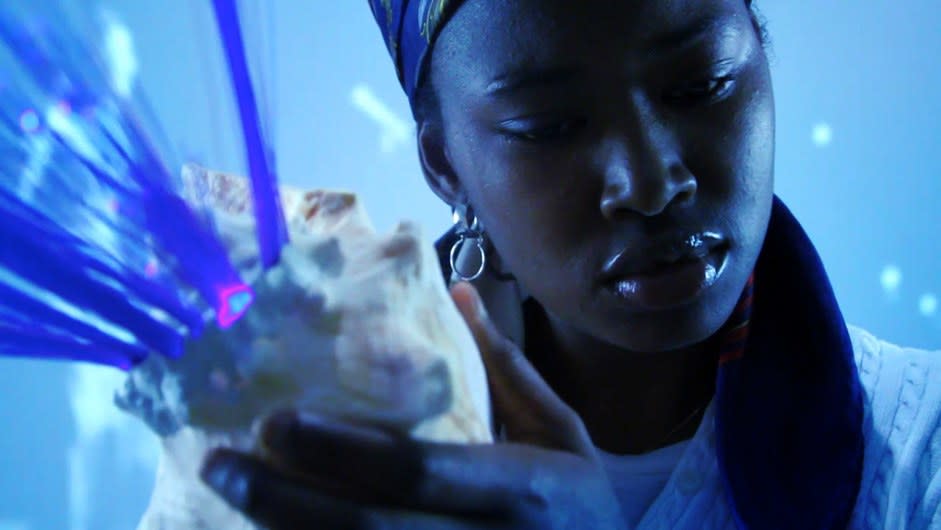Meet Salome Asega, the Multihyphenate Artist Working to Diversify the Tech World
“There’s this myth around what people who work in technology are supposed to look like,” says Salome Asega, the partnerships director of Powrplnt. Founded by Anibal Luque and Angelina Dreem, the space—filled with plants, colorful lighting, and charming black and white tiles—provides affordable technology-meets-art workshops led by local artists, which are free for children and donation- or membership-based for adults. The classes cover a wide range of subjects, from music production and Photoshop to logo making and DJing. In Asega’s role, she scouts for organizations with which Powrplnt can host various programs and workshops. “We are doing hybrid work and blurring the lines of how people view and interact with the tech world,” the Las Vegas–raised, New York–based artist explains. “We want to shake up what it’s supposed to look like, while making it fun and accessible for all.”
The space offers classes specifically for people of color, women, and gender nonconforming people, “so that everyone can feel comfortable asking questions without feeling judged,” Asega says of Powrplnt’s mission to carve out safe spaces. “It’s important that people can be silly while learning. You don’t want to feel so self-aware to the point where you’re blocking your own learning,” she notes, recalling moments in her own schooling when she hesitated to speak out.

powrplnt.jpg
But Asega’s work on bridging the gap between the art and tech worlds, and diversifying those realms, doesn’t end with Powrplnt. The New York University graduate, who studied socially engaged art and sculpture, is also a part-time instructor at Parsons the New School for Design, where she teaches speculative design, and has a fellowship at the Ford Foundation until February 2020, where she brings a technological lens to the “creativity and free expression team, which covers arts and culture, journalism, and documentary filmmaking.”
Her own artwork leans heavily on interplay between the two spheres. The Iyapo Repository, which she created alongside Ayodamola Okunseinde during a residency at Eyebeam in 2016, is a resource library full of artifacts dreamed up in participatory workshops that “affirm and project the future of people of African descent.” Asega and her team then bring some of those artifacts to life as films. Take, for example, Artifact 111: Mother Radio. “Mother Radio is an artifact that resembles a seashell, but acts as a radio that airs sounds and music across diaspora and time. The person who drew this wanted to make a connection between the deity Yemaya and women’s impact and influence in sound and music-making practices,” she explains.

Having carved her own path, she recognizes the importance of encouraging and developing a better understanding of “all the ways artists are using emerging technology to tell stories, and why it’s important for these two communities to come together.” In the abstract, it might seem like these two fields often diverge, but Asega firmly believes that, together, they can have very specific benefits: “Having an arts or humanitarian lens in technology centers people and communities,” she says, and makes learning about tech more accessible and inclusive as “it can offer an entry point for people to better understand the more complex aspects of technology.”
Stay tuned for a second Powrplnt space, although the team is still figuring out where it will be located. “I would love to see it grow in a way that continues to align with the hyperlocal mission,” Asega notes. In the interim, she will continue aiming to diversify the tech space and showing that the art and tech worlds go hand in hand, as she understands the importance of “being surrounded by those who look and think like you in those times of learning.”
Originally Appeared on Vogue

